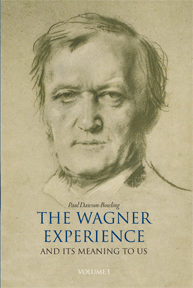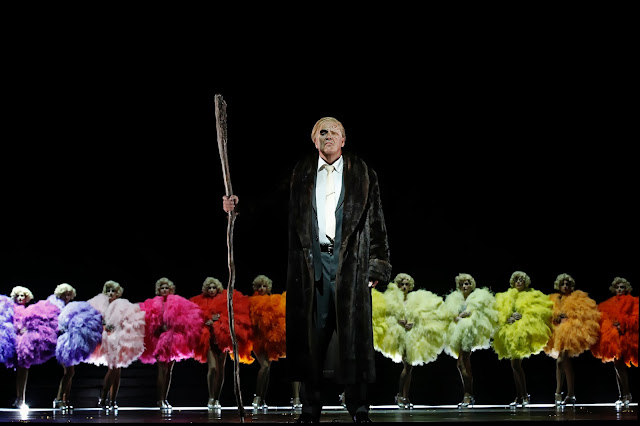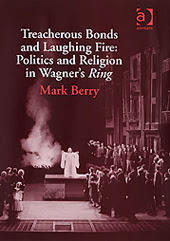DSD recording, Mariinsky Concert Hall , St
Petersburg, June 2010, February, April & June
2012

It's official, Valery Gergiev is the most inconsistent conductor of prominence today. Now, it is common for less prominent conductors, and especially those starting out, to show a wide inconstancy in how they approach works. This is indeed the time when they are learning their "own voice". However - for the few that do - by the time they reach the level of "fame" of a Gergiev, their approach is normally close to crystallized. There are great differences between say, Levine or Karajan's early and latter styles and even Sergiu Celibidache - who grow more "Zen like" as he incorporated more and more notions such as
Ichi-go ichi-e into his performances in latter years - but by the time they reach world prominence, their recordings and performances are clearly signed with their own individuality. It is easy to spot a Solti, or Karajan, a Rattle or Barenboim
Walkúre for example. But Gergiev? For long I had thought that his performances lacked a certain "unique" voice or indeed a consistent level of quality. Sometimes I love his readings - his
Parsifal for example - and other times his readings either leave me unmoved and on a few occasions simply numb. And so we turn to his Rheingold for the Marjinsky label - the second release in his new Ring cycle.
Regular readers will be aware I disliked the first release - perversely Die Walküre - immensely. It is honestly one of the most disappointing Wagner recordings of the last 70 years or so. This is exasperated by a cast that should never have allowed it to be. Looking back, I made all sorts of Freudian claims about it: saying it lacked: "...muscle, energy, excitement; while remaining limp, flaccid..." and on it went. I have returned to it a few times since and while I am no longer as "horrified" by it I was, it is still a sadly uninspired and worst of all "sterile" recording. Yes, the notes are all there, in the right order and it it is well sung enough, but it is just so "boring" - and this is from someone who likes Goodall and Celibidache.
So what are we do make of Rheingold? Well, it is as though it was conducted by a different person. This Rheingold consists of all the excitement, drama and forward momentum that was so much missing in Walkure. It is extraordinary, as if Gergiev had stepped down and Karl Böhm had been resurrected, given vast quantities of amphetamines and let lose. And this is reflected in the performances, especially that of Rene Pape's
Wotan. What was previously simply "good singing" has now blossomed into a believable characterization of Wagner's often complex, if ultimately self doomed, god.
The cast is uniformly good, with special mention going to the
Rheindaughters of Zhanna Dombrovskaya, Irina Vasilieva, Ekaterina Sergeeva and Ekaterina Gubanova's
Fricka. Yes, there are the odd diction "problems" with some cast members, but this is forgivable in one of the best
Rheingold casts in many a year. Even the Mariinsky Orchestra., who disappointed me in
Walkúre, seem to have pulled themselves together from sounding like a rag tag group of session musicians into a generally unified whole.
However, this does not mean that this is a perfect recording. There are two problems with it for me. First tempo: while certainly inconstant, it generally favours fast pacing. Indeed, this maybe the shortest
Rheingold ever recorded,. So much so, that on the odd, rare, occasion, individual members of the orchestra seem to struggle to "keep up". This means it lacks a certain "majesty" or "transcendencey" that is found in the best performances. This is especially noticeable in the opening, where "consciousness" doesn't so much rise from the depths of "unthinking", as it smashes through the doors with a battering ram. If you are one of those that dislike Böhm's "faster pacing" (never as fast as people think. Check the lengths of the recordings of each act) then this will simply horrify you. I like it, but am unsure that after enough listens it may simply leave me exhausted. It is far from a "subtle" reading. But it is so different from other recording that this is far from a bad thing - I think. There are so many similarly paced recordings of
Rheingold - and a few very slowly paced - that there is room for this type of reading. Or at least as long as you own more than one version.
My second issue however, may prove to be the most problematic. Despite its very differing "styles"(sometimes changing, in the case of
Siegfried, from one act to another) the Ring remains a very unified work. Given the difference in style between Walkure and
Rheingold will we end up with a Ring cycle or simply four very different "operas" that continue one story? Perhaps after all, Gergiev, has an overall plan? I doubt it, based on past experience, and my greatest fear, having heard Gergiev's two works in the cycle so far, is that he simply "doesn't get it", that he simply does not understand how unified these four works are. We will know by the end of 2014 - I have been wrong before. But for now, I would heartily recommend this
Rheingold.









































.jpg)


















